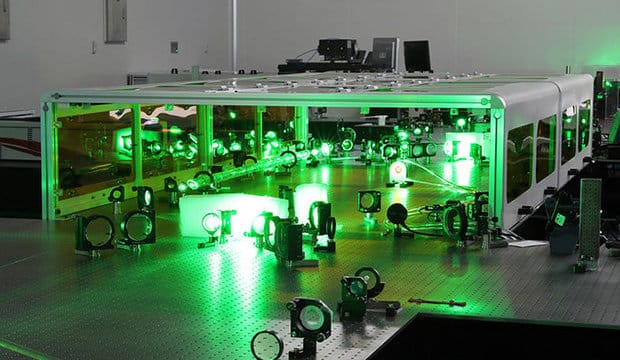Scientists can potentially use lasers to CHANGE the weather
Boffins in Shanghai, China, have been designing the world's most powerful laser.
The team has already made history with its earlier invention, the Shanghai Superintense Ultrafast Laser Facility have already set records.
The machine is small enough to fit on a tabletop, and contains a disc, the width of a frisbee, which is made of titanium-topped sapphires.
![[IMG]](https://cdn.images.dailystar.co.uk/dynamic/1/photos/351000/620x/laser-main-676615.jpg)
POWERFUL: Scientists in China are designing a laser powerful enough to rip a hole in space

Shanghai Superintense Ultrafast Laser Facility (SULF), has set power records yet fits on tabletops.
But this small device, by pushing light through the crystal and refracting it off a series of mirrors and lenses, is able to produce unbelievable amounts of power.
The laser set records in 2016 when it produced a pulse of 5.3 petawatts (million billion watts).
The blasts are incredibly brief, lasting less than a trillionth of a second.
![[IMG]](https://cdn.images.dailystar.co.uk/dynamic/1/photos/358000/laser-1-1213358.jpg)
Amplifiers for the University of Rochester's OMEGA-EP, lit up by flash lamps, could drive a U.S. high-power laser.
But the team hopes to beat its own record, and produce a 10 petawatt shot — or 1,000 times the power of all of the world's electrical grids combined.
This year physicist Ruxin Li and his team are planning on building a laser that will pack a mind-boggling 100 petawatt burst.

This year, Li and colleagues intend to start building a 100-PW laser known as the Station of Extreme Light (SEL). By 2023, it could be flinging pulses into a chamber 20 meters underground, subjecting targets to extremes of temperature and pressure not normally found on Earth, a boon to astrophysicists and materials scientists alike. The laser could also power demonstrations of a new way to accelerate particles for use in medicine and high-energy physics. But most alluring, Li says, would be showing that light could tear electrons and their antimatter counterparts, positrons, from empty space—a phenomenon known as "breaking the vacuum." It would be a striking illustration that matter and energy are interchangeable, as Albert Einstein's famous E=mc2 equation states. Although nuclear weapons attest to the conversion of matter into immense amounts of heat and light, doing the reverse is not so easy. But Li says the SEL is up to the task. "That would be very exciting," he says. "It would mean you could generate something from nothing."
The incredibly powerful laser could be used to make particle acceleration far cheaper and easier to do — making the Large Hadron Collider in CERN obsolete.








Post a Comment Blogger Facebook Disqus
EmoticonClick to see the code!
To insert emoticon you must added at least one space before the code.